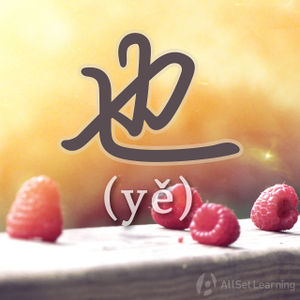Difference between revisions of "Expressing "both… and…" with "ji...you""
Jacobleeliu (talk | contribs) |
|||
| Line 51: | Line 51: | ||
=== Books === | === Books === | ||
| + | |||
| + | {{Source|HSK Standard Course 4上|86}} | ||
{{Source|New Practical Chinese Reader 3 (新实用汉语课本3)|120}} | {{Source|New Practical Chinese Reader 3 (新实用汉语课本3)|120}} | ||
| Line 57: | Line 59: | ||
[[Category:B2 grammar points]] | [[Category:B2 grammar points]] | ||
| + | {{HSK|HSK4上}} | ||
{{Basic Grammar|既|B2|既⋯⋯也 / 又⋯⋯|他 做 事情 <em>既</em> 快 <em>又</em> 好。|grammar point|ASGZRPCK}} | {{Basic Grammar|既|B2|既⋯⋯也 / 又⋯⋯|他 做 事情 <em>既</em> 快 <em>又</em> 好。|grammar point|ASGZRPCK}} | ||
{{Rel char|又}} | {{Rel char|又}} | ||
Revision as of 09:13, 4 March 2019
既 (jì) can be used in conjunction with either 又 (yòu) or 也 (yě) to express that something is "both A and B":
Contents
Used with 又
Structure
既 + A + 又 + B
A and B can be adjectives, verbs or short phrases. Most of the time A and B will take the same form i.e. if A is an adjective B will also be an adjective.
Examples
- 他 做 事情 既 快 又 好。He does things both quickly and well.
- 这 家 银行 的 服务既 热情 又周到。This bank's service is both enthusiastic and thorough.
- 这个 产品 的 设计 既 时尚 又 人性化。This product's design is both stylish and humane.
Used with 也
Structure
The structure can also be formed with 也, but here it is used primarily for verbs or verb phrases:
既 + [Verb Phrase] ,也 + [Verb Phrase]
Examples
- 她 既 是 我 妈妈 ,也 是 我 朋友。She is both my mother and my friend.
- 要求 是 你 既 要 会 说 流利 的 中文 ,也 要 会 说 流利 的 英文 。The requirement is that you need to speak both fluent Chinese and English.
- 爸爸 很 生 我 的 气 ,不过 他 既 没 打 我 ,也 没 骂 我 。Dad was really mad at me, but he neither hit me nor yelled at me.
See also
Sources and further reading
Books
- 卓越汉语-公司实战篇 (pp. 11) 卓越汉语-公司实战篇 →buy



